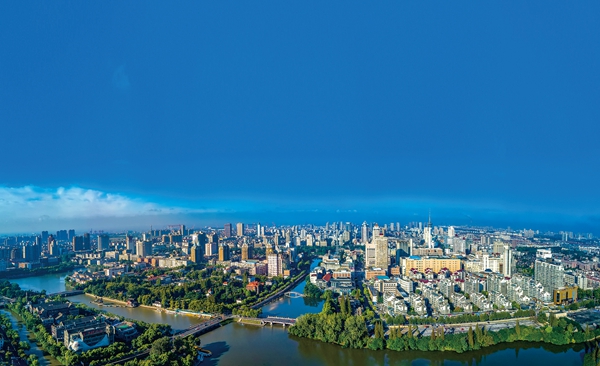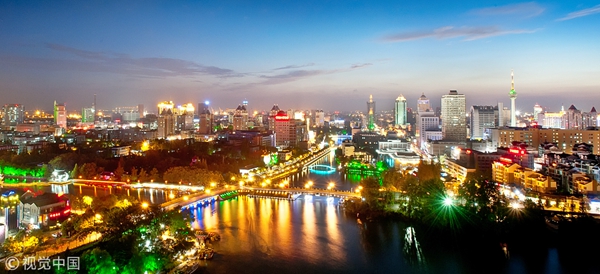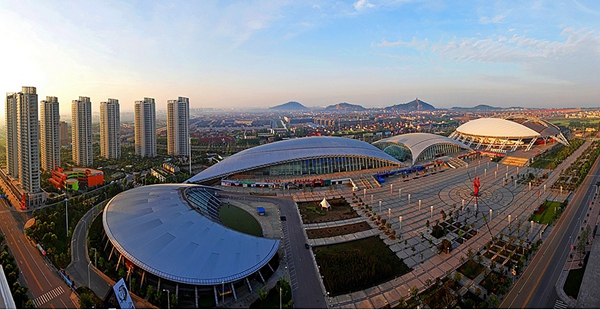Nantong

[Photo provided by Peng Changqing]
Located on the north wing of the Yangtze River estuary, Nantong is in the southeastern part of Jiangsu province, adjacent to Taizhou to the west, and bordering on Yancheng to the north. Nantong is surrounded by water on three sides, and thus is shaped as a peninsula, with its northern to the northeastern parts adjacent to the Huanghai Sea, and its southern part facing the Yangtze River. Nantong is connected to Suzhou and Shanghai via two cross-river bridges, the Su-Tong Yangtze River Highway Bridge and the Chongqi Bridge.
The city covers a total area of 8,001 square kilometers, 1,521 of which are urbanized. The river and sea lines are 425 kilometers in length, and include 219 kilometers of the Yangtze River bank line and 206 kilometers of coastline.

[Photo/VCG]
The GDP of Nantong in East China's Jiangsu province registered a year-on-year increase of 2.1 percent in 2022, reaching nearly 1.14 trillion yuan ($168.80 billion), according to the Nantong municipal bureau of statistics.
The added value of the primary industry grew 3.8 percent year-on-year to 51 billion yuan, that of the secondary industry expanded by 2.9 percent year-on-year to 561.11 billion yuan, and that of the tertiary industry increased by 1 percent year-on-year to 525.85 billion yuan.
The added value of industries above designated size experienced a year-on-year increase of 5.1 percent, while the output value of the core digital powered manufacturing industry grew 19 percent year-on-year.
From January to November last year, the operating revenue of service providers above designated size amounted to 106.71 billion yuan, up 7.2 percent year-on-year, while that of the information transmission software and information technology service sector expanded by 17.9 percent year-on-year.
The city's total retail sales of consumer goods totaled 395.69 billion yuan last year, a year-on-year increase of 0.5 percent.
Fixed asset investment declined 2.9 percent year-on-year, while investment in infrastructure increased 30.1 percent from the previous year.
The per capita disposable income of Nantong residents reached 49,093 yuan, up 4.7 percent year-on-year. The per capita disposable income of urban and rural residents in the city amounted to 59,605 yuan and 30,819 yuan respectively, posting year-on-year increases of 4 percent and 5.8 percent.
Nantong is an ethnically mixed center with the Han as the dominated group; it accounts for more than 99.7 percent of the permanent population. Known as the "land of promise", Nantong is famous for its abundance of products and outstanding people, and boasts such honors as being known as the hometown of textiles, architecture and education. Nantong is one of the coastal port cities that China has further opened to the outside world since the beginning of reform and opening up.
Entering the twenty-first century, it has developed its economy and society in a leapfrog way at all levels, earning itself a reputation and national ranking for civilized culture, environmental protection, sanitation, gardens, ecology, excellent comprehensive management of public security, and advanced scientific and technological progress.

[Photo provided to chinadaily.com.cn]


 Dynamic Decade: Jiangsu recounts amazing achievements in education
Dynamic Decade: Jiangsu recounts amazing achievements in education
